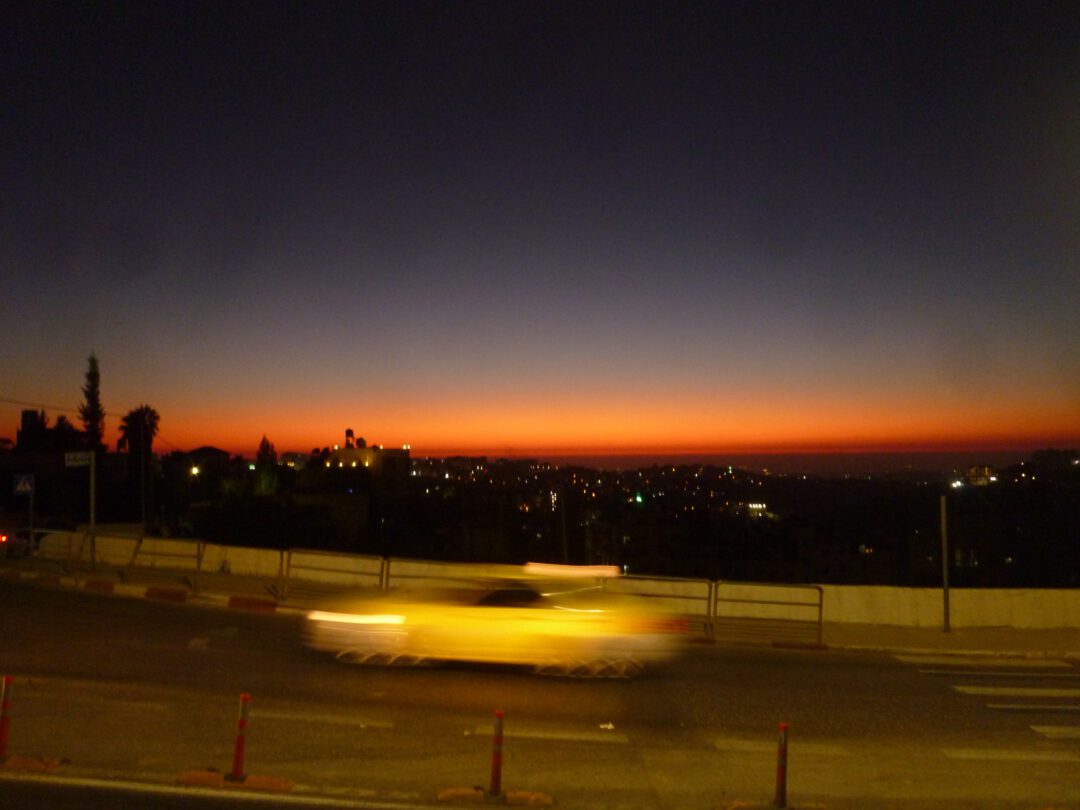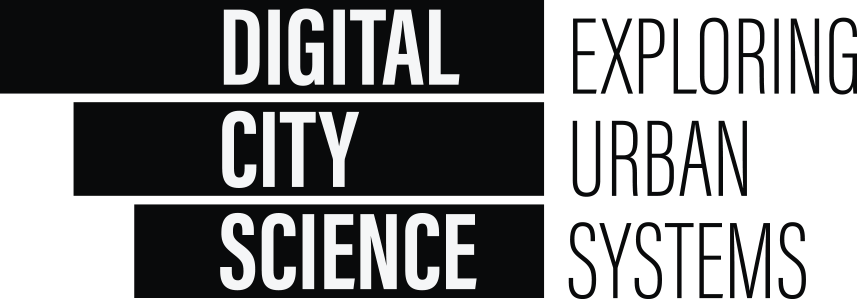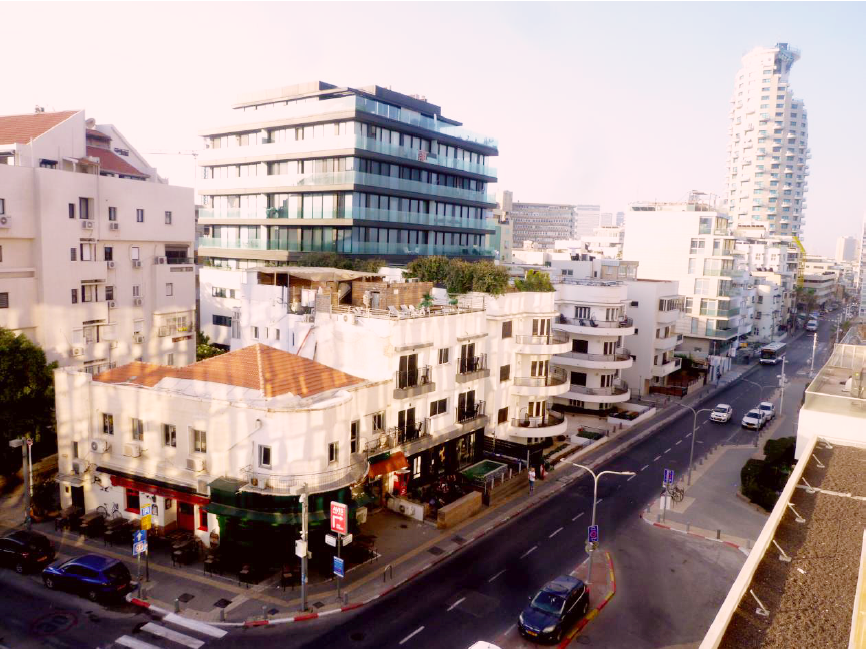A delegation travel to Israel gave chance to reflect about the two so different cities of Tel Aviv and Jerusalem – and juxtapose their urban narratives and appearances. There may be no other places so different yet so close together.
A place of special intensity. As an urban researcher one may hardly encounter places with more contrasts and contradictions – but also commonalities – than the two cities of Jerusalem and Tel Aviv. There are few spots in the world that bring together so much socio-cultural, political, and urban difference in small space like those two cities, which are little more than 50 km apart, set between the Mediterranean Sea and the Judean mountains. The tiny stretch of land is a remarkable convergence point of history, geography and religion, bearing a maximum weight of cultural, intellectual and spiritual achievements. Here everything is tightly knotted, meshed, and interwoven. The two cities manifest some of most dramatic experiences and events of urban development – and conflict.
Delegation. A delegation visit to Israel in June 2023 gave chance for a close-up experience of the interplay and opposition of the two cities, which are just 45 minutes apart by train or car, reflecting Israel’s small size. The delegation assembled by the office of the Hamburg´s First Mayor (and then President of the German Federal Council) travelled both places in less than a week. The group comprised delegates from healthcare, economy, science and research, and was supposed to further contacts in the field of public health care and urban development – like Digital City Science´s cooperation with the Technion Israel Institute of Technology in Haifa, which had started just a year ago. Although the tour had been originally intended to feature Smart City components too, the protocol eventually only allowed visits to places like the Shimon Peres Peace Center or the Yad Vashem memorial, plus exchanges with the Israel startup ecosystem. Nonetheless, the urban component was there anyway. Both cities represent very special images and stories – which may be no stronger in contrast. This juxtaposition of the two visited cities – their stark differences and contrasts – invited thought and reflection. It became the hidden leitmotif of the travel.
Mundane Tel Aviv. Tel Aviv, on the one hand – is the bright modern metropolis, epitomizing the innovation culture and modern life style of the self-declared Startup nation Israel. Packed with high-rises placed along a youthful sand beach, Tel Aviv presents itself as the rational and dynamic place. Being named after the novel “Altneuland” (“Old New Land”) written by Zionism founder Theodor Herzl, Tel Aviv was imagined from the outset as a clean, modernist, future city that wanted to distinguish itself clearly from the then existing towns in the area. The newness spirit was a key component to be brought to the ancient land of Palestine. Established only in 1909 and inspired by European metropolises, the new city was to introduce all kinds of urban innovations (Tel Aviv, for example, was the first electrified city in Palestine). Before all, modern architecture was to function as a signature for the avant-garde way of thinking in this new city.
Bauhaus. No city in the world features more buildings of the so-called “International Style” – that is Bauhaus-inspired buildings with cubic, rational and purist geometries. This architecture has shaped the identity of Tel Aviv as a “White City” – as a modern place that is highly approachable for innovators and creative industries from all over the world. Being a “From zero to one” city, Tel Aviv welcomes people who make and create; it was made for receiving people with hands-on and “just do it” mentality. A mundane place without burden, a certain Mediterranean lightness prevails here. The air is fresh not only because of the sea side breezes but because of new ideas.
Religious Jerusalem. Only few kilometers away there is Jerusalem – the eternal city, sacred place for three world religions. Also a “destination” that is used to receive people from allover the world – but of another caliber. While Tel Aviv seems light-minded and aloft, things in Jerusalem are as heavy as can be. The Jerusalem narrative is complex to the extreme, far from having a single, simple plot. Unlike Tel Aviv, one does not come to Jerusalem to shape the future but to experience the past. Since centuries, Jerusalem is an epicenter of pilgrimage. The place is soaked with the stories of Abraham, David, Salomon, Jesus – eminent patriarchs, prophets, priests, kings and saints have lived here. More than 1200 synagogues, 150 churches and 70 mosques punctuate the city today. Faith, belief, and fanaticism have fermented the city – and still determine its present urban structure and life.
Divided into the Arabian East Jerusalem, and Israel-controlled West-Jerusalem, its still unclear political status hovers like an invisible doom over the city. Escalations and outbreaks of violence are steadily threatening. In Jerusalem the air is thick of history and religion. Every move is political. Also the international world still struggles about the status of Jerusalem – only a few countries have recognized Jerusalem as the capital of Israel, and have moved their embassies here from Tel Aviv.
The epicenter of conflict is the Temple Mount, the mythical place at the Eastern edge of the Old City. Here the palace and temple of King David had been. Now the Dome of the Rock, a Muslim sanctuary as well as the Western Wall, focal point of Jewish faith, are visited here by pilgrims of both religions. The old city – which is under Arab control – is scattered with bazaars that feature all things that can be imagined and worshipped – from orthodox Christian icons to plastic guns. Patrolling between kiosks of groceries and tourist souvenirs in the deep covered lanes, Israeli army secures the approach to the Temple Mount with machine guns.
West Bank. During thevisit to both cities, the unresolved Israel-Palestinian conflict hovered above the heads of the travel group. The political section of the delegation had met Israel´s Prime Minister Netanjahu and then headed straight to the West Bank to see president Abbas of the Palestinian Authority.
From the window of the King David hotel in Jerusalem the lights of the Palestinian West Bank territories were clearly visible, in almost no distance. Only half a year ago we had looked the opposite direction. From the heights of Ramallha we had watched the shore of the Mediterranean Sea and the skyline of Tel Aviv disappearing in the dusk below, only 50 kilometers away. Our guide had remarked then that most Palestinians in the West Bank had never been to the beach.

Jerusalem – Temple Mountain (Dome of Rock) and Western Wall

View from Ramallah towards Tel Aviv



No responses yet